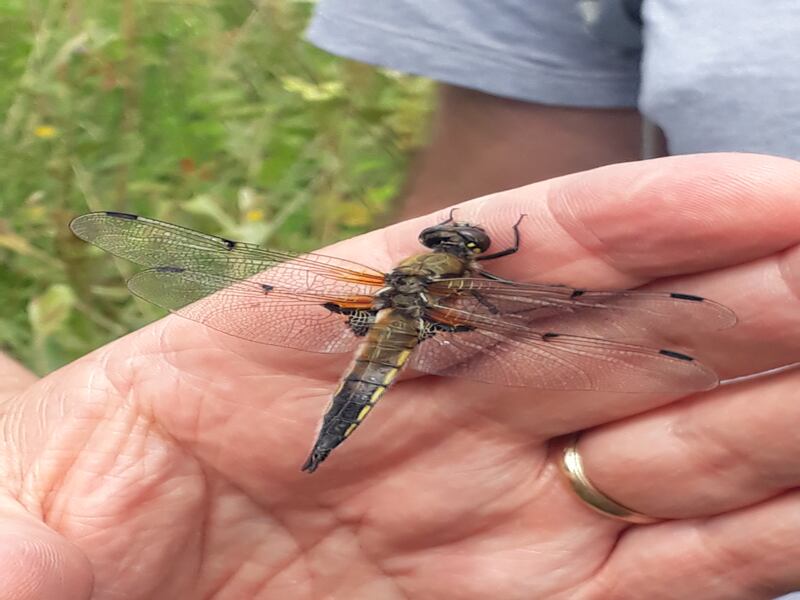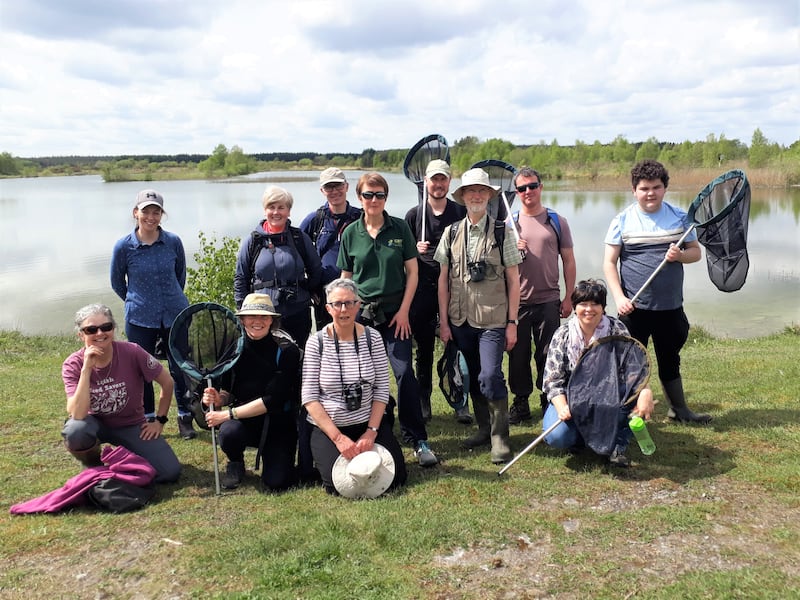You don’t need a lab coat or letters after your name to help grow the body of scientific knowledge around Ireland’s environmental heritage. Ordinary individuals do it every day, making important contributions to scientific research in their role as citizen scientists.
Simply by observing, logging and reporting the things you see while out and about, you can contribute greatly to the work of the National Biodiversity Data Centre (NBDC), a Heritage Council programme.
It is important work because in order to conserve biodiversity we need to know how it is changing. The NBDC, which is based in Waterford, operates a number of citizen science monitoring programmes that generate scientifically robust insights to track such change, in both species and habitats.
Simply by observing, logging and reporting the things you see while out and about, you can contribute greatly to the work of the National Biodiversity Data Centre
The centre relies on the goodwill of ordinary people who take part in its recording initiatives and monitoring schemes. These include Dragonfly Ireland, a major all-Ireland survey of dragonflies and damselflies, and Explore Your Shore!, which tracks the creatures that live on beaches.
READ MORE
Everything the centre does is about making biodiversity data more freely available to anyone who wants it, says Dave Wall, its citizen science officer.

“The data is used by the general public, by government agencies and by researchers,” says Wall. “Before the NBDC was set up, in 2007, you could still have had all this data, but you would have to trawl through universities and researchers to find it, there was no one place to go to see it.”
The dragonfly study is a repeat of one taken 20 years ago. “Twenty years ago, the Emperor Dragonfly, which typically lives anywhere from north Africa northwards, was just getting a toehold in the south coast of Ireland. We have now seen the first Emperor Dragonfly recorded in Donegal, so it has spread across the whole country, probably facilitated by global warming,” explains Wall.
“On every dive I take loads of photos and submit to Seasearch Ireland where it goes on to the National Biodiversity Data Centre”
Explore Your Shore! is important because the creatures that live between the low and high tide marks have not received the same amount of attention from conservationists as many so-called land-based species, he explains adding that the organisation is only establishing a base line for some marine species, such as sea grass.
Here, too, it is about looking at indicators of climate change. “Since 2016 we have had ever increasing recordings of the Portuguese Man of War, a kind of jellyfish. Prior to that we didn’t have any, again possibly due to climate change,” says Wall.
Being sure of our shores
For National Heritage Week the NBDC led a bio-blitz on the shores of Carlingford Lough. The aim was to record over 100 species, a figure Wall was confident of achieving.

Encouraging members of the public to undertake such surveys, and to record sightings, is of national importance.
“We would struggle to get funding for expert recorders,” explains Wall. “But we also find that members of the public are eager and enthusiastic to get involved. We have lots of recorders now all around the country, all helping voluntarily, and at different levels of activity, from people who spot something on a casual walk and send in a picture, to site surveys, where you sit at a local pond for half an hour and record everything you see. We try and offer different levels of engagement. Doing a bit of recording is a great excuse to get out and about, which is good for our mental and physical health too, so it’s a win-win.”
“Leeches, snails and water louse are generally indicative of nutrition-enriched water caused by sewage or farm runoff”
That’s something people all over Ireland discovered during National Heritage Week, including members of Alpha Dive Sub Aqua Club in Meath, which took part in a citizen science sea search at Greenore, Co. Louth and sent its underwater recordings to the National Biodiversity Data Centre’s database.
It also held a marine bio-blitz at nearby Templetown Beach, where new recruits to the world of citizen science explored its intertidal shore, photographing and recording as many marine species as possible.
For club organiser Aidan Gray, recording underwater findings comes naturally. “On every dive I take loads of photos and after the dive I go through them and fill in a report to record all the species I’ve seen, which I then submit to Seasearch Ireland, from where it goes on to the National Biodiversity Data Centre,” explains Gray.
There are currently 17 such marine-related citizen science projects that people can help out with here. For Gray, who took up diving four years ago, life under the water was a revelation. In recent dives he recorded 45 different species, including sea hares, hermit crabs, octopi, lobster and crawfish. “It’s like a really lovely garden underwater, especially with the anemones,” enthuses Gray. “Lots of divers don’t do reports but if every diver could do a report after every dive, what they saw would not be lost.”
Ensuring an earthy education
National Heritage Week also saw a bio-blitz take place at Cabragh Wetlands, at Holycross in Tipperary, providing an opportunity for citizen scientists to identify and register all the different species living in this wetland habitat, which is run by the Cabragh Wetlands Trust, a volunteer community group.
The wider wetlands area at Cabragh extends to 200 acres and encompasses 15 different habitats including ponds, reed swamps, hedgerows, streams and wildflower meadows, with footpaths and raised walkways to allow visitors to explore them.
Its bio-blitz saw experts in plants, insects, pond life and birds lead citizen scientists, many of whom were children, to find, identify and log around 200 different species. “We put a very high value on earth literacy, getting the children familiar with what’s around them,” says Ciaran Lynch of the Cabragh Wetlands Trust.
Over in Cork, a workshop on the Citizen Science Stream Index took place during National Heritage Week, at Glenbower Woods in Killeagh. Participants were shown how to check the water quality of a stream by the simple but highly effective method of ‘kick-sampling’, explains Karen Loxton of Wild Work, an initiative of SECAD, a local development company.
“It’s a way for anyone to be able to tell how clear any little stream is, because you can tell a lot about the health of a stream from what lives there,” she says.
Of course, you can take a water sample, but Loxton points out that nature moves streams. That means a polluting spill could be gone by the time you take a sample. But by looking at the insects and invertebrates that live in the stream bed, and the ratios between them, you can ascertain its overall health.
“We go out with nets and kick up the stream bed,” says Loxton. “You don’t even need to know how to name them, just look for may fly, stone fly and cabbage fly. Those are the ones we want to see because they need really clear water with high oxygen levels. But if we find leeches, snails and water louse, they are generally indicative of nutrition-enriched water.”
Such “nutrition” is caused by, for example, sewage or farm runoff. “Nutrition-enriched water grows algae that soaks up oxygen,” she explains.
Results are recorded on the basis of a traffic light system, running from green to red, on forms that are ultimately forwarded to the NBDC.
Undertaking citizen science in this way is hugely empowering for people, says Loxton; “It’s a simple technique anyone can use to go and check the quality of their local stream.”









